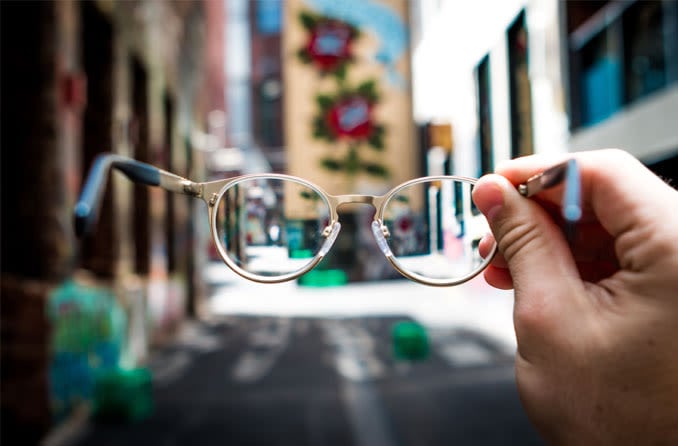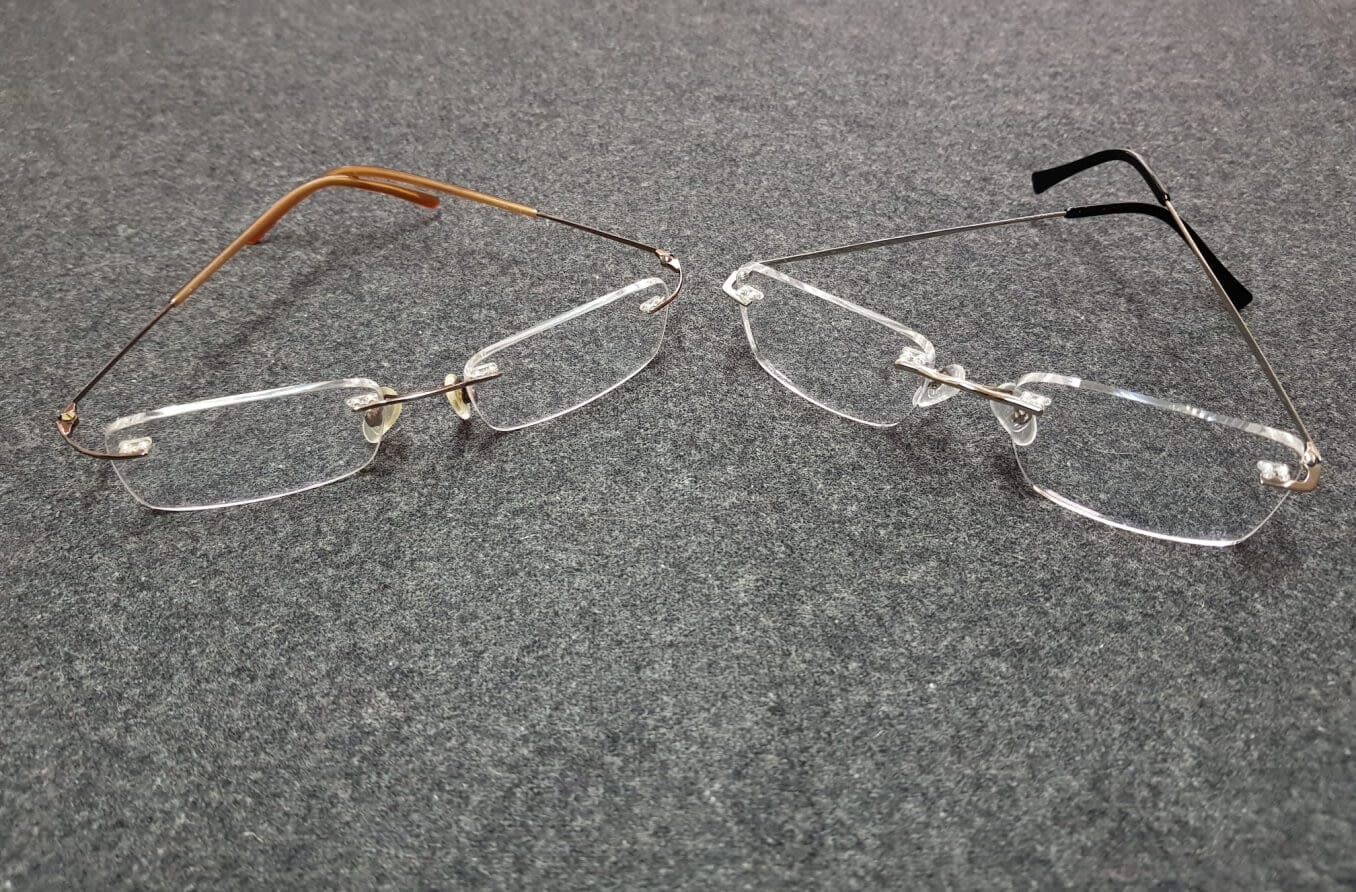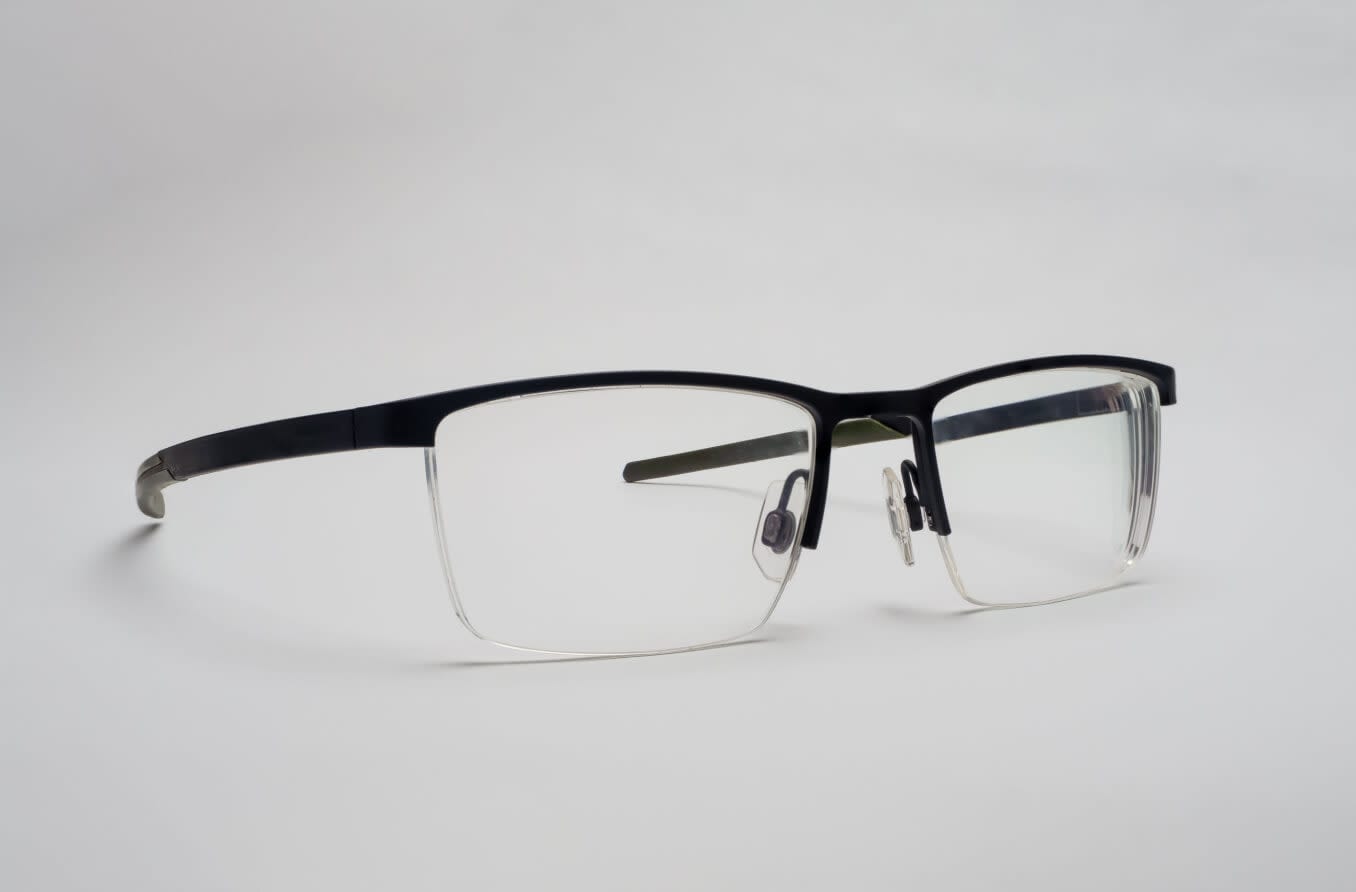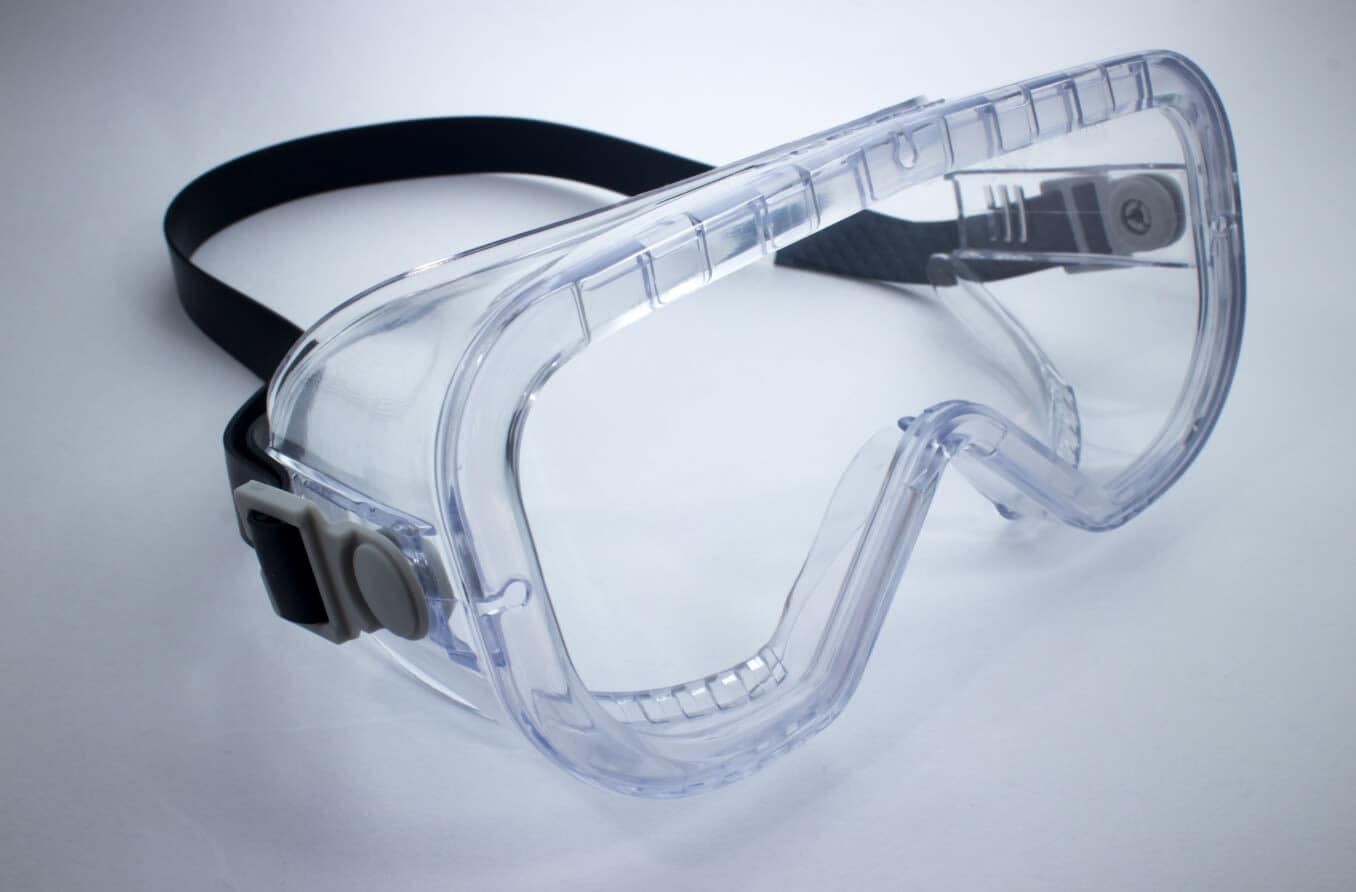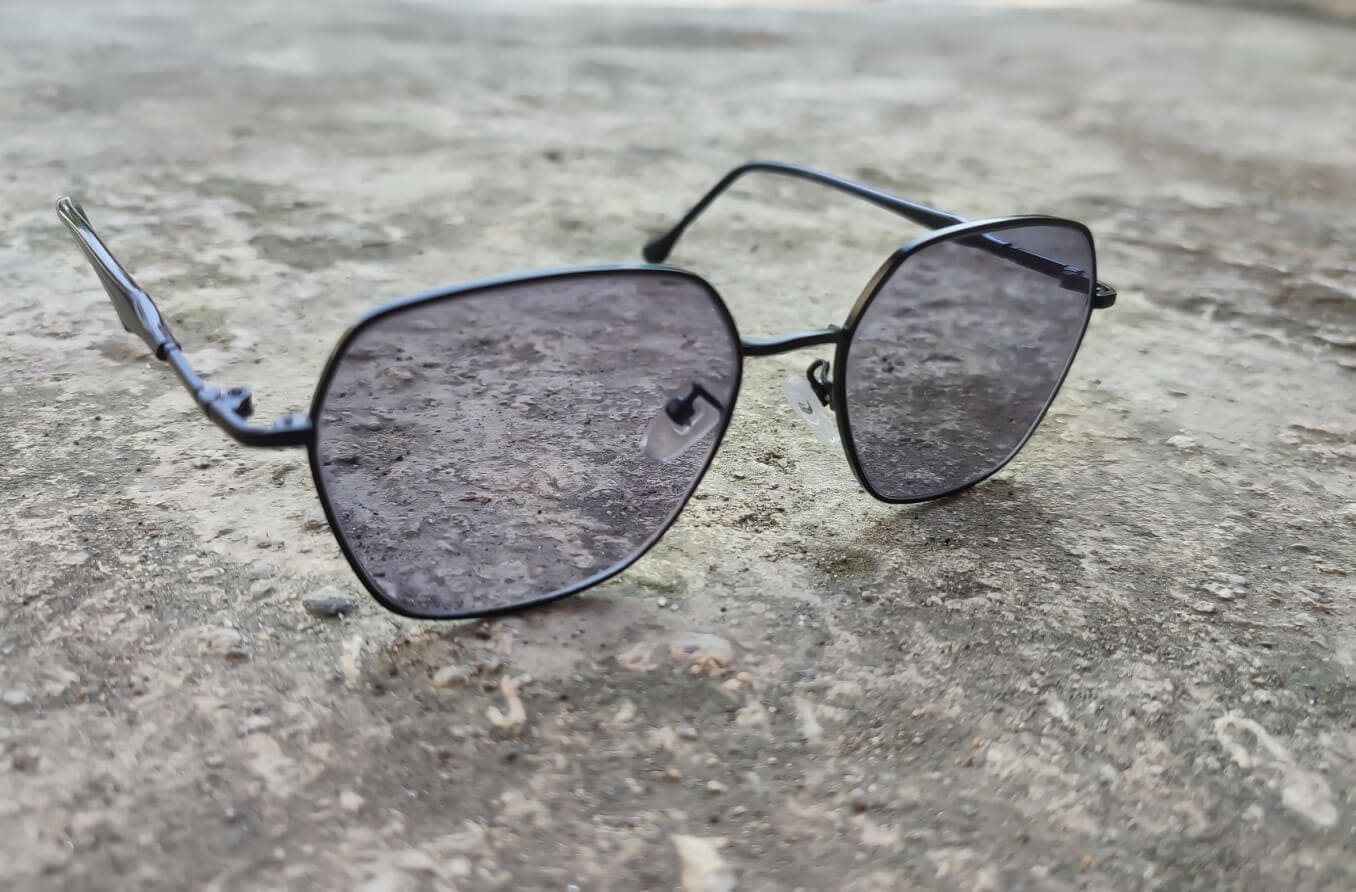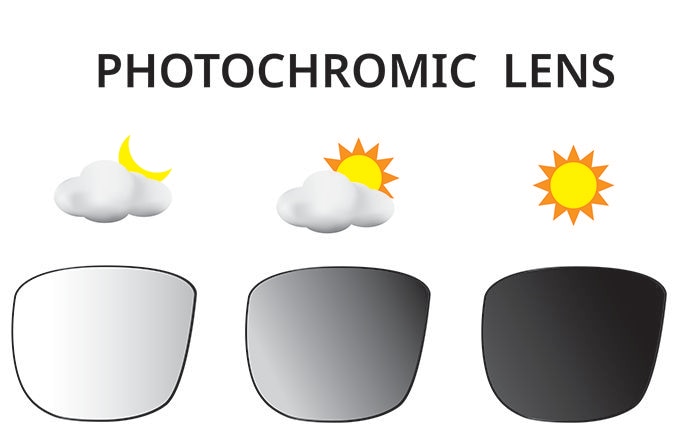Do you have 20/20 vision when you wear your glasses but still feel dissatisfied with how you see? You might benefit from high-definition lenses.
Sometimes, higher-order aberrations can affect your vision, even if your prescription eyeglasses fully correct your nearsightedness, farsightedness and/or astigmatism. These aberrations may be due to the optical characteristics of your eyes or can be caused by the optical limitations of conventional eyeglass lenses.
But there's good news! Recent advances in lens manufacturing have made possible new high-definition eyeglass lenses that correct these aberrations, potentially giving you sharper vision than you've ever had before with eyeglasses. These lenses are designed to provide sharper vision in all lighting conditions and reduce glare for nighttime driving and other night vision tasks.
Many brands of high-definition eyeglass lenses currently are available, including high-definition versions of high-index lenses, progressive lenses and photochromic lenses.
Keep in mind that for the best vision and comfort, all high-definition lenses should include anti-reflective (AR) coating to eliminate distracting reflections.
SEE RELATED: Polycarbonate vs. High-Index Lenses
Free-Form Lenses
The most popular type of high-definition eyeglass lenses are called free-form lenses. The term "free-form" refers to an advanced manufacturing process that reduces higher-order aberrations such as spherical aberration that occur in eyeglass lenses created with traditional eyeglass lens manufacturing tools and processes.
High-definition lenses are designed to provide sharper vision in all conditions and reduce glare for nighttime driving.

With free-form lenses (also called digital high-definition lenses), the fabrication of the lenses from wearer's eyeglass prescription is optimized with computer-controlled surfacing equipment that is much more precise than conventional tools.
In fact, free-form technology can surface lenses in power increments of 0.01 diopter (D), compared with 0.125 to 0.25 D increments of conventional eyeglass lens tooling.
The fabrication of some digital, free-form lenses also takes into account how the lenses are positioned in front of the wearer's eyes when in the eyeglass frame, to provide the most accurate lens power and the sharpest vision possible.
Other factors that may be considered in the lens customization process include the angle between the eye and the back surface of the lens in different gaze positions (for example, when the wearer is looking off to the side rather than straight through the center of the lens), the frame size and the position of the wearer's pupil within the frame outline.
With these and possibly other factors taken into account during lens design and fabrication, high-definition eyeglass lenses offer an unprecedented degree of customization and may reduce or eliminate certain higher-order aberrations.
The precisely made and personalized surfaces of high-definition lenses may help reduce aberrations that limit field of view and cause starbursts, halos and comet-shaped distortions of lights at night.
The result is that high-definition lenses may provide sharper image quality, better peripheral vision, improved contrast sensitivity and less glare at night.
Popular single vision high-definition eyeglass lenses include:
- Essilor 360 DS (Essilor of America)
- Hoya NuLux EP (Hoya Vision Care)
- Shamir Autograph II SV (Shamir Insight)
- Clarlet Individual (Carl Zeiss Vision)
Popular progressive high-definition lenses for correcting presbyopia include:
- Hoyalux iD MyStyle (Hoya Vision Care)
- Seiko Supercede (Seiko Optical Products of America)
- Shamir Autograph II (Shamir Insight)
- Varilux Physio DRx (Essilor of America)
- Sola HDV (Carl Zeiss Vision)
- Zeiss Progressive Individual 2 (Carl Zeiss Vision)
Because creating high-definition lenses requires additional information beyond what is recorded on your eyeglass prescription, your optician usually will take additional measurements when you choose your eyeglass frames.
Sometimes, a proprietary measuring device is used for fitting and fabricating a specific brand of free-form, high-definition lenses.
One example is the Zeiss i.Terminal 2, a photo-capture system that automatically measures several fitting parameters — including the distance between the wearer's pupils (PD), fitting height, tilt of the frame (pantoscopic angle) and distance between the back of the lenses and the front of the eyes (back vertex distance) — to optimize the performance of Carl Zeiss Vision's Individual brand of customized high-definition lenses.
Another example is the Visioffice 2 system from Essilor. This second generation, 3D patient measuring device provides eye care professionals an accurate, precise and consistent way to prescribe and fit high-definition eyeglass lenses that are personalized for each patient's specific visual needs and frame choice, according to the company. The Visioffice 2 also features a frame selection module that enables patients to easily compare how they look wearing up to eight different frame styles.
Wavefront Lenses
Some lens manufacturers have introduced an even more customized type of high-definition eyeglass lenses called wavefront lenses.
Wavefront lenses are created with the help of the same sophisticated technology used to measure the optics of the eye prior to custom, wavefront-guided LASIK eye surgery: A computerized instrument projects uniform light waves into the eye, which reflect off the retina, and the returning "wavefront" of light is analyzed to evaluate all optical imperfections — not just refractive errors, but higher-order aberrations as well.
In custom LASIK, these wavefront measurements are used to program the excimer laser to reshape the front surface of the eye. In wavefront eyeglass lenses, the measurements drive a computer-controlled manufacturing process that creates customized, high-definition lenses.
The first brand of wavefront eyeglass lenses introduced in the United States was iZon High Resolution Lenses, manufactured by Ophthonix.
According to the company's website, in simulated nighttime driving tests (55 mph in glare conditions), subjects wearing iZon High Resolution Lenses were able to detect, recognize and react to a pedestrian walking alongside the road an average of 20 feet sooner than drivers wearing conventional eyeglass lenses.
Besides improving night vision, iZon lenses also helped correct lingering vision problems following LASIK and other refractive eye surgery, the company said.
But only a limited number of optometrists and ophthalmologists prescribed iZon wavefront lenses, and in October 2012, Ophthonix announced it was ceasing operations after 11 years of business.
In 2011, Carl Zeiss Vision introduced a brand of wavefront high-definition lenses in the United States called i.Scription by Zeiss. Like iZon lenses, i.Scription by Zeiss lenses are designed to correct higher-order aberrations and provide sharper vision than regular eyeglass lenses.
According to the company, i.Scription by Zeiss lenses also help wearers see better in low light conditions and experience improved contrast and color vision.
In order to create i.Scription by Zeiss wavefront lenses, measurements of your eyes are performed by your eye care professional with the company's proprietary i.Profiler Plus — a three-in-one automated device that measures refractive error, corneal topography and higher-order aberrations. Wavefront data gathered by the i.Profiler Plus are then sent to a Zeiss optical lab to fabricate the custom-made high-definition lenses.
Are You A Candidate For High-Definition Lenses?
Virtually anyone who wears eyeglasses is a good candidate for high-definition eyeglass lenses, but individuals with higher eyeglass prescriptions may notice greater benefits than people with only mild prescriptions.
Perhaps one of the best indicators that high-definition eyeglass lenses might be a good choice for you is if your optometrist or ophthalmologist says you have healthy eyes and 20/20 vision, but you are bothered by glare or your vision seems indistinct.
If you are dissatisfied with the clarity of your eyesight with your current glasses, ask your eye care professional if high-definition eyeglass lenses might provide sharper vision.
Cost Of High-Definition Lenses
Because of the sophisticated technology used to design and fabricate free-form and wavefront lenses and the added time and equipment required to fit them, expect to pay up to 25 to 30 percent more for high-definition eyeglass lenses, compared with conventional lenses of the same material and design.
Though high-definition lenses cost more than conventional eyeglass lenses, many people who try them — particularly wearers who've been frustrated by a lack of crisp vision with glasses in the past — find free-form and wavefront lenses produce a noticeable improvement in clarity and comfort.
[For the latest news about high-definition lenses and other eyeglass lenses, see What's New in Eyeglass Lenses.]


